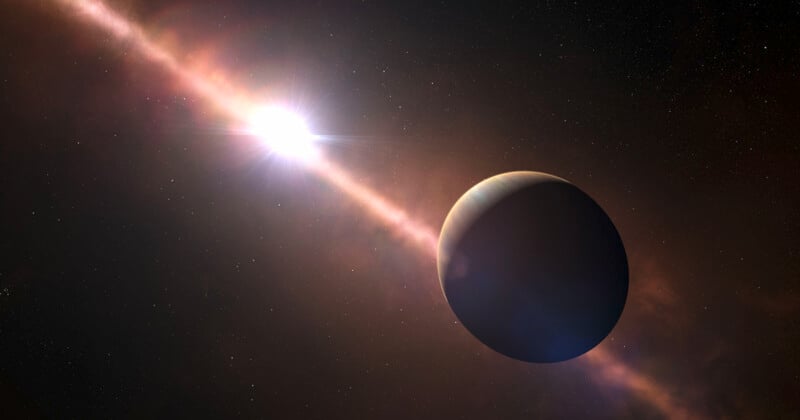17 Year Timelapse Shows Mysterious Exoplanet’s Orbit

Northwestern University astrophysicist Jason Wang led a project to create the longest timelapse of an exoplanet ever assembled. The video compresses 17 years of real data of an exoplanet orbiting its star down to just 10 seconds — and that 17 years was only enough for the planet to travel about 75% of a single 23.6-year orbit.
As Space.com explains, the exoplanet, Beta Pictoris b, is a gas giant that has 12 times the mass of Jupiter. It travels around its star, Beta Pictoris, on a tilted orbit. Located about 63 light-years from Earth in the Pictor constellation, Beta Pictoris b was first imaged in 2003.
“It’s extremely bright. That’s why it’s one of the first exoplanets to ever be discovered and directly imaged. It’s so big that it’s at the boundary of a planet and a brown dwarf, which are more massive than planets,” says Wang.
Wang began tracking the exoplanet years ago and the timelapse video includes data collected from 2003 to 2020.
However, the planet is not under continuous observation, so images are not available for every day during that 17 year period.
Wang enlisted the help of high school student Malachi Noel from New Trier High School in Winnetka, Illinois. Noel, a graduate of Northwestern’s Center for Interdisciplinary Exploration and Research in Astrophysics (CIERA), worked under Wang’s mentorship earlier this year.
Noel used image processing techniques powered by artificial intelligence (AI) to analyze archival imaging data of Beta Pictoris b collected by the Gemini Observatory and European Southern Observatory.
“After Noel uniformly processed the data, Wang then used an algorithmic technique called motion interpolation to fill in gaps to create a continuous video. Otherwise, the exoplanet would jump around instead of smoothly orbiting through space,” explains Northwestern University.
“If we just combined the images, the video would look really jittery because we didn’t have continuous viewing of the system every day for 17 years,” Wang explains. “The algorithm smooths out that jitter, so we can imagine how the planet would look if we did see it every day.”
“Due to the long time range, there was a lot of diversity among the datasets, which required frequent adaptations to the image processing. I really enjoyed working with the data. While it is too early to know for sure, astrophysics is definitely a career path I am seriously considering,” says Noel.
Even though Beta Pictoris b is an especially large, bright exoplanet, it is still overpowered by its star, Beta Pictoris. When the exoplanet gets too close to its star, it is outshined. In these instances, the planet is marked with an X in the video. The star is covered by a black circle and marked with a star icon because special instrumentation is used to try to suppress glare caused by the star.
The distance between Beta Pictoris b and Beta Pictoris is about 10 times the distance between Earth and the Sun. Beta Pictoris is a staggering 8.7 times brighter and 1.75 times as massive compared to the Sun. At 20 to 26 million years old, Beta Pictoris is also an extremely young star.
“A lot of times, in science, we use abstract ideas or mathematical equations,” Wang says. “But something like a movie — that you can see with your own eyes — gives a visceral kind of appreciation for physics that you wouldn’t gain from just looking at plots on a graph.”
Wang has previously created similar timelapse videos, including one showing four gas giants orbiting the star HR8799.
HR8799 was the first extrasolar planetary system ever directly imaged in 2008. Using 12 years of data, Wang created the timelapse seen above.
“It’s usually difficult to see planets in orbit,” Wang explained in 2020. “For example, it isn’t apparent that Jupiter or Mars orbit our sun because we live in the same system and don’t have a top-down view. Astronomical events either happen too quickly or too slowly to capture in a movie. But this video shows planets moving on a human time scale. I hope it enables people to enjoy something wondrous.”